Imagine a mysterious cosmic phenomenon so powerful that not even light can escape its grasp. Such mind-boggling entities, known as black holes, have captivated astronomers and astrophysicists for centuries. These enigmatic objects possess immense gravitational pull, shaping the very fabric of galaxies and playing a pivotal role in their evolution. In this article, we embark on a fascinating journey to unravel the profound interplay between black holes and galaxies, exploring their formation, impact on stellar and galaxy evolution, as well as the latest evidence and observations that continue to deepen our understanding of these cosmic enigmas. Join us on this celestial adventure as we delve into the intriguing realm of black holes and their pivotal role in galactic evolution.
Contents
- Understanding Black Holes
- The Interplay Between Black Holes and Galaxies
- Evidence and Observations
- Black Holes and Stellar Evolution
- Black Holes and Galaxy Evolution
- The Future of Black Hole Research
- Conclusion
-
Frequently Asked Questions
- 1. What happens when you fall into a black hole?
- 2. Can black holes die or disappear?
- 3. Are there different types of black holes?
- 4. How do black holes form?
- 5. Can black holes merge with each other?
- 6. Can anything escape from a black hole?
- 7. How can we detect black holes?
- 8. Do black holes have a size?
- 9. Are there black holes outside of galaxies?
- 10. Can black holes help us understand the nature of the universe?
- References
-
Frequently Asked Questions
- 1. How are black holes formed?
- 2. What is the role of black holes in galactic evolution?
- 3. What are supermassive black holes?
- 4. How do black holes affect galaxy formation?
- 5. How do we observe black holes?
- 6. Can black holes destroy entire galaxies?
- 7. Are black holes a threat to our existence?
- 8. Can black holes be used for space travel?
- 9. Do black holes ever disappear or die?
- 10. What are the future prospects of black hole research?
- References
- Read More
Understanding Black Holes
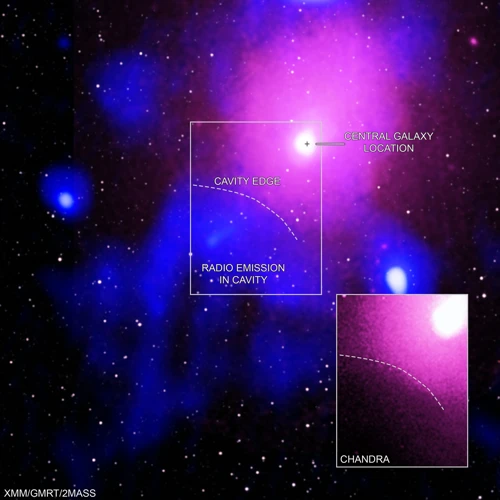
Picture a cosmic chasm where gravity reigns supreme, distorting space and time itself. This bewildering realm is home to black holes, celestial objects of immense density and gravitational force. Black holes are formed from the remnants of massive stars that have collapsed under their own gravity, creating a gravitational singularity from which no light can escape, known as the event horizon. As matter and energy enter this cosmic abyss, they are forever swallowed, leaving behind a void of unimaginable proportions. While black holes are not directly observable, their presence can be inferred through various astrophysical phenomena. These enigmatic entities play a remarkable role in the cosmos, influencing the evolution of galaxies and leaving astronomers and physicists with countless questions. To further comprehend the captivating nature of black holes, we must explore their formation and the intricate interplay they have with galaxies and stellar evolution.
1. What Are Black Holes?
At the core of our understanding of black holes lies a captivating paradox – they are both simple and infinitely complex. Black holes are regions of spacetime where gravity is so intense that nothing, not even light, can escape their clutches. The concept of an event horizon marks the boundary beyond which escape becomes impossible. Beneath this menacing threshold exists the singularity, a point believed to be infinitely dense and infinitely small. This profound concentration of mass warps the surrounding spacetime, creating a gravitational pull that defies comprehension. The formation of black holes can occur through different mechanisms, including the collapse of massive stars or the accumulation of matter in dense regions of space. Stellar black holes, which result from the explosions of supernovae, typically range from a few times the mass of our sun to several tens of times its mass. Supermassive black holes, on the other hand, reside at the centers of galaxies and contain millions or even billions of solar masses. As we delve into the mysteries of black holes, we must confront the paradoxical nature of these cosmic behemoths and seek to decipher the secrets they hold within their lightless depths.
2. Formation of Black Holes
The formation of black holes is a fascinating process that occurs under specific conditions in the universe. There are two primary pathways through which black holes can form: stellar mass black holes and supermassive black holes.
Stellar mass black holes are created when massive stars, typically with at least 20 times the mass of our sun, reach the end of their life cycle. These stars undergo a cataclysmic explosion known as a supernova, resulting in the ejection of outer layers while leaving behind a dense core. If this core exceeds a specific mass, called the Tolman-Oppenheimer-Volkoff limit, the gravitational pull becomes overwhelming, causing a collapse. Within seconds, the core collapses to an infinitely dense point, forming a black hole. This process is known as gravitational collapse and gives rise to stellar mass black holes scattered across the cosmos.
Supermassive black holes, on the other hand, are found at the centers of galaxies and possess masses equivalent to millions or even billions of suns. The exact mechanism of their formation is still a topic of scientific investigation. One proposed theory suggests that supermassive black holes form through the gradual accumulation of matter and the merger of smaller black holes over billions of years. Another theory suggests that supermassive black holes could have emerged from the direct collapse of massive gas clouds during the early stages of galaxy formation. Further research and observations, such as studying the properties of active galactic nuclei, will provide more insight into the formation of these colossal cosmic entities.
Understanding the formation of black holes is crucial for unraveling their role in galactic evolution. By studying their origins, scientists can gain valuable insights into the formation and evolution of galaxies themselves. It is an ongoing endeavor to explore the mysteries surrounding black hole formation and the impact they have on shaping the universe we inhabit.
The Interplay Between Black Holes and Galaxies
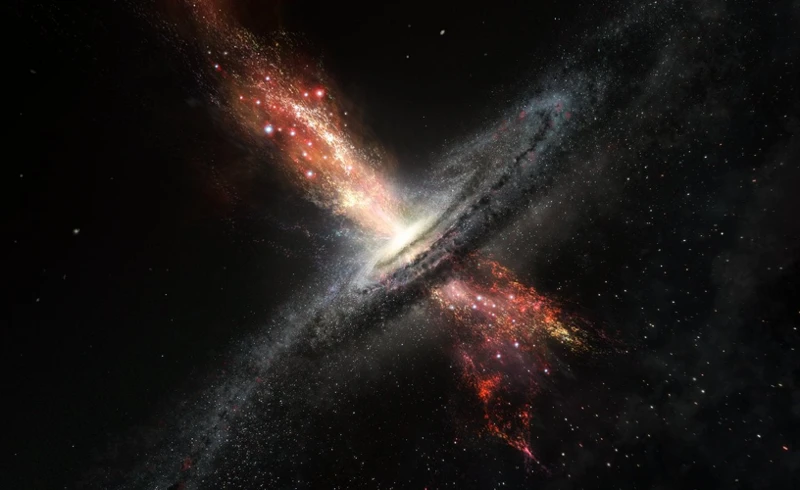
| Article Header |
|---|
| The Role of Black Holes in Galactic Evolution |
Evidence and Observations
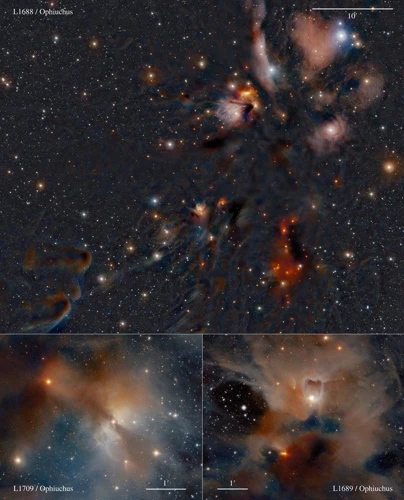
The existence and behavior of black holes may seem like an enigma, but astronomers have gathered compelling evidence and observations that offer insight into these cosmic behemoths. One remarkable piece of evidence is the observation of stellar orbits around black holes. By carefully studying the motion of stars in the vicinity of suspected black holes, scientists have been able to deduce the presence of these invisible giants. Additionally, the recent detection of gravitational waves further supports the existence of black holes. These ripples in the fabric of spacetime, caused by the collision of massive objects like black holes, provide a unique window into their existence and serve as a validation of Einstein’s theory of general relativity. Black holes have been identified as the central engines powering some of the brightest objects in the universe known as quasars. These highly energetic phenomena serve as celestial beacons, illuminating the presence of a supermassive black hole at their centers. Through a combination of meticulous observations and theoretical modeling, scientists continue to uncover the fascinating secrets of black holes and their impact on the evolution of the cosmos.
1. Stellar Orbits around Black Holes
The study of stellar orbits around black holes provides invaluable insights into the nature of these enigmatic cosmic beasts. Astronomers have observed stars that are in close proximity to black holes in our galaxy, such as the supermassive black hole at the center of the Milky Way called Sagittarius A*. By carefully tracking the motion of these stars, scientists have been able to determine their orbits and make remarkable discoveries. One such discovery is the effect of strong gravitational forces near black holes, leading to a phenomenon known as gravitational redshift. As a star orbits close to a black hole, the intense gravity causes its light to shift to longer wavelengths, causing a visible redshift. This observation confirms Einstein’s theory of general relativity and provides evidence for the existence of black holes. Additionally, the study of stellar orbits also helps determine the mass and spin of black holes, as well as their accretion processes. By analyzing the motion and behavior of surrounding stars, astronomers can uncover more about the characteristics and behavior of these cosmic wonders. Understanding stellar orbits around black holes is a crucial piece in the puzzle of comprehending the dynamics and impact of these captivating celestial entities. As we continue to delve deeper into the mysteries of the universe, unraveling the intricacies of stellar orbits around black holes brings us closer to understanding the profound workings of our cosmos.
2. Gravitational Waves from Black Hole Collisions
Gravitational waves, ripples in the fabric of spacetime, have emerged as a powerful tool for observing the cosmos and understanding the dynamics of black hole collisions. When two black holes merge, they create intense gravitational disturbances that propagate through the universe as gravitational waves. These cosmic phenomena were first predicted by Einstein’s theory of general relativity and were finally detected in 2015 by the Laser Interferometer Gravitational-Wave Observatory (LIGO). The detection of gravitational waves from black hole collisions provided direct evidence of the existence of black holes and ushered in a new era of gravitational wave astronomy. These waves carry invaluable information about the masses and spins of the black holes involved in the collision, as well as the merger’s energetics and the conditions of the surrounding space. By studying these gravitational waves, scientists can gain insights into the behavior of black holes in extreme conditions, shedding light on their formation and evolution. This breakthrough discovery has opened up a new chapter in astrophysics and has paved the way for further exploration into the mysterious nature of black holes.
3. Black Holes as Quasars
Black holes have the captivating ability to transform into some of the brightest and most energetic objects in the universe known as quasars. Quasars are essentially black holes that reside at the centers of galaxies and actively accrete enormous amounts of matter. As this matter spirals into the black hole’s event horizon, it forms an accretion disk, a swirling disk of superheated gas and dust. The gravitational forces generated by the black hole cause the material in the accretion disk to release an astonishing amount of energy in the form of intense light and radiation. This process creates a luminous and highly visible quasar, whose brilliance can outshine even entire galaxies.
Quasars are not only fascinating cosmic phenomena, but they also provide valuable insights into the properties of their host galaxies. The energy emitted by quasars can have a profound impact on the surrounding gas and dust, triggering star formation and influencing the dynamics of the entire galaxy. Scientists study quasars to understand the co-evolution of supermassive black holes and their host galaxies. These vibrant celestial objects offer a glimpse into the early universe, as some quasars observed today are billions of light-years away. By examining their spectral signatures, scientists can unravel the composition and physical conditions of the interstellar medium at those cosmic distances.
The study of quasars has led to groundbreaking discoveries, such as the existence of supermassive black holes, their role in galaxy evolution, and the interconnected nature of black holes and the cosmic structures they inhabit. As researchers continue to delve deeper into the nature of black holes and quasars, they not only gain a better understanding of the cosmos, but also uncover clues about the origins of galaxies and the fundamental laws that govern our universe.
For more information on cosmic objects and their mythical origins, you can explore the intriguing tale of Icarus and Daedalus, which intertwines the human desire to reach the sun with ancient mythology.
Black Holes and Stellar Evolution
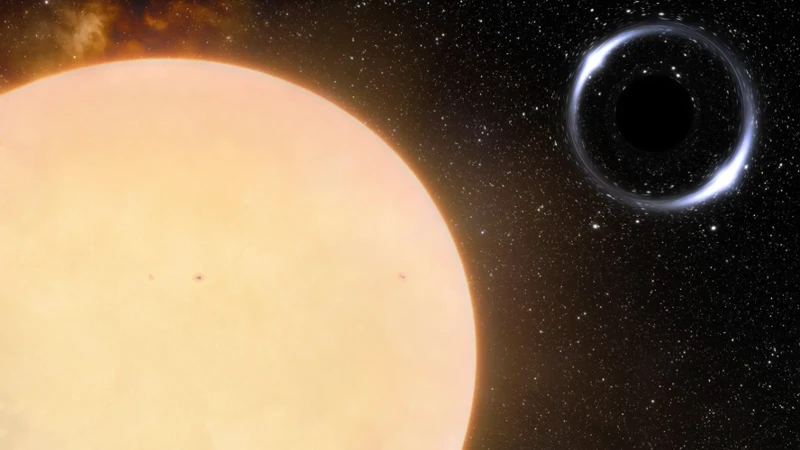
As stars evolve and reach the end of their lifespan, a remarkable transformation unfolds, leading to the potential birth of a black hole. When a massive star exhausts its nuclear fuel, gravitational forces cause it to collapse inward. The core becomes so dense that it forms a singularity, creating a swirling gravitational vortex from which nothing can escape. This cataclysmic event is known as a supernova, releasing an extraordinary amount of energy and dispersing heavy elements into the interstellar medium. The resulting black hole has an immense gravitational pull that can affect neighboring stars and even entire galaxies. The presence of black holes can have a profound impact on stellar feedback, shaping the formation of new stars and triggering an array of galaxy-wide effects. The study of black holes and their connection to stellar evolution provides a fascinating glimpse into the intricate mechanisms that drive the evolution of the cosmos.
1. Stellar Death and Black Hole Formation
When a massive star reaches the end of its life, it undergoes a dramatic process known as stellar death. During this phase, the star exhausts its nuclear fuel, causing the core to collapse under its own gravity. The collapse generates an intense shockwave, leading to a supernova explosion that disperses the star’s outer layers into space. What remains after this cataclysmic event is a dense core called a neutron star or, if the core is sufficiently massive, a black hole. Black hole formation occurs when the core’s mass exceeds a critical threshold, called the Tolman-Oppenheimer-Volkoff (TOV) limit, resulting in a gravitational collapse so extreme that even the neutrons and other particles are crushed into a singularity. This singularity is surrounded by the event horizon, which marks the boundary beyond which nothing can escape the black hole’s gravitational pull. The process of stellar death and black hole formation is a captivating cosmic spectacle, contributing to the rich tapestry of galactic evolution.
2. Stellar Feedback and Galaxy-Wide Effects
Stellar feedback, a phenomenon closely tied to the presence of black holes, plays a crucial role in shaping galaxy-wide effects. As stars go through their life cycles, they release vast amounts of energy in the form of radiation, stellar winds, and supernova explosions. This energy interacts with the surrounding interstellar medium, initiating a chain of events that reverberate throughout the galaxy. The immense gravitational pull of black holes can enhance this process even further.
Stellar feedback can trigger powerful outflows of gas and dust, creating galactic winds that sweep across the galaxy. These winds carry with them crucial elements and heavy elements synthesized within stars, which are ejected back into the interstellar medium. The expulsion of these materials can regulate the amount of gas available for star formation in a galaxy, thus influencing its evolution.
The intense radiation emitted by black holes and massive stars can heat up and ionize nearby gas clouds, affecting their ability to collapse and form new stars. This process, known as photoionization, can either inhibit or promote star formation, depending on the circumstances. In some cases, the energy emitted by black holes can even completely disrupt the process of star formation in their vicinity.
The galaxy-wide effects of stellar feedback extend beyond just the immediate vicinity of black holes. The galactic winds generated by this process can stretch across vast distances, affecting the overall structure and dynamics of the galaxy. These winds can clear out gas and dust, altering the conditions necessary for the formation of new stars. They can also drive shocks through the interstellar medium, compressing gas clouds and triggering the collapse of denser regions, ultimately leading to the formation of new stars.
Stellar feedback, amplified by the presence of black holes, has profound galaxy-wide effects. It regulates the availability of gas for star formation, influences the ionization state of the interstellar medium, and shapes the overall structure and dynamics of galaxies. Understanding the intricate interplay between black holes, stellar feedback, and its broader implications is crucial in unraveling the complex tapestry of galactic evolution.
Black Holes and Galaxy Evolution
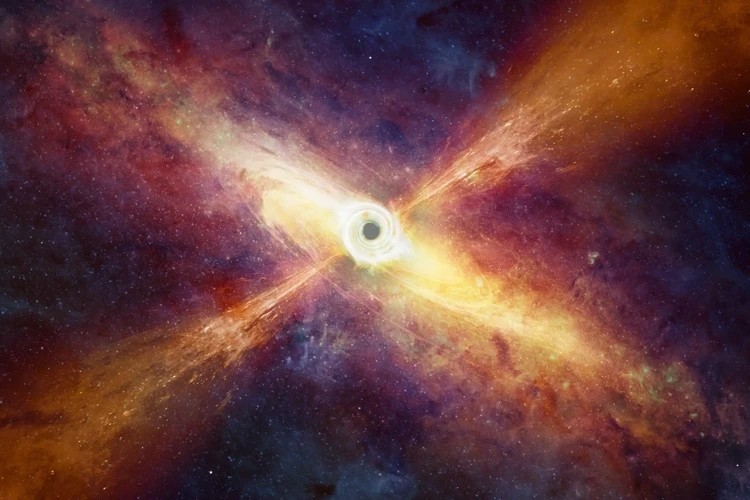
In the grand cosmic dance of galactic evolution, black holes hold a pivotal role. These enigmatic entities not only shape the structure of galaxies but also influence their growth and transformation over time. Interactions and mergers between galaxies can trigger the formation of supermassive black holes at their centers, leading to the birth of active galactic nuclei (AGN). These powerful AGN unleash immense amounts of energy, from jets of particles traveling at near-light speeds to intense radiation emitted across the electromagnetic spectrum. As galaxies merge, the gravitational forces at play drive the material towards the central black holes, fueling their growth and creating a feedback loop that can regulate star formation and shape the galaxy’s overall structure. The intricate relationship between black holes and galaxy evolution continues to captivate astronomers, as they strive to unravel the complexities of these cosmic phenomena and understand their impact on the grand tapestry of the universe.
1. Interactions and Mergers
The process of interactions and mergers between galaxies plays a crucial role in the evolution of black holes and their host galaxies. When galaxies come into close proximity, their gravitational forces can cause significant disruptions and interactions. During these encounters, gravitational tugs can disturb the orbits of stars and gas within the galaxies, leading to the formation of structures such as tidal tails, bridges, and shells. As the interaction progresses, the galaxies may eventually merge, resulting in a larger, more massive galaxy.
This cosmic dance of galactic interaction and merger can have profound effects on the black holes residing within them. As galaxies merge, their central black holes are also brought together, spiraling inward towards each other due to gravitational forces. This process, known as black hole coalescence, can result in the formation of a more massive black hole, with the combined mass of the two progenitor black holes. The merger can be a cataclysmic event, releasing an enormous amount of energy in the form of gravitational waves that ripple through the fabric of space-time.
As the newly formed black hole settles into its central position within the merged galaxy, it begins to shape the evolution of the galactic structure. The increased mass of the black hole leads to a stronger gravitational pull, which can influence the distribution and motion of stars and gas within the galaxy. This can affect the rate of star formation and the dynamics of gas accretion onto the black hole itself.
Interactions and mergers between galaxies are pivotal events in the cosmic ballet, driving the growth and evolution of both black holes and galaxies. By studying these interactions, astronomers gain insights into the intricate relationship between black holes and their host galaxies, shedding light on the role they play in the formation and development of the universe as we know it.
2. Role in Triggering Star Formation
Black holes, renowned for their immense gravitational pull, also have a significant role to play in the formation of new stars. When galaxies undergo interactions or mergers, the gravitational forces involved can trigger a cascade of events that lead to the birth of stars. As two galaxies merge, for example, the gas and dust within them become compressed and funneled into central regions. This influx of material creates density gradients and immense pressure, which can force the collapse of gas clouds under their own gravity. Here, black holes come into play.
As gas clouds collapse, they fragment into smaller clumps, which eventually become the birthplaces of new stars. However, the presence of a black hole can have a profound impact on this process. The strong gravitational pull from the black hole can disrupt the formation of stars within its vicinity. It can generate powerful jets of energy and radiation that blow away or heat up the surrounding gas, preventing it from collapsing and forming stars. This phenomenon is known as feedback from the black hole’s active accretion disk.
With feedback from black holes, star formation can be regulated and quenched in certain regions of galaxies. This process is essential for maintaining the balance between star formation and black hole growth. Without such regulation, galaxies could experience runaway star formation or the complete exhaustion of gas, ultimately disrupting the delicate equilibrium necessary for galactic evolution.
Evidence for the role of black holes in triggering star formation comes from observations of distant galaxies. In these galaxies, the central supermassive black holes have been found to have a negative impact on star formation. The intense feedback from these black holes affects the surrounding gas, preventing it from collapsing and forming new stars. This link between black holes, feedback, and star formation provides a crucial insight into the intricate mechanisms that regulate the growth of galaxies throughout the universe.
Black holes play a compelling role in triggering star formation through their gravitational pull and the feedback mechanisms they produce. By understanding the interplay between black holes and star formation, scientists gain valuable insights into the complex processes that shape the evolution of galaxies. Continual research and observations in this field will undoubtedly shed further light on the fascinating relationship between black holes and the birth of stars.
The Future of Black Hole Research
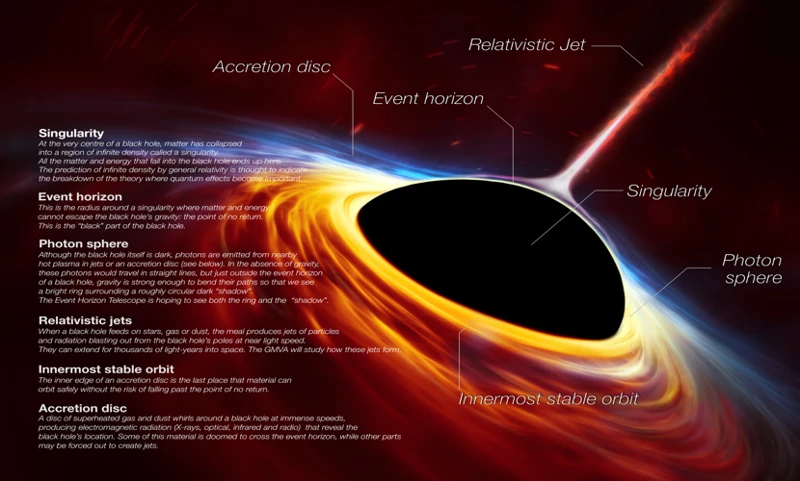
The exploration of black holes has been a journey that has expanded our understanding of the universe, but there is still much to discover. The future of black hole research holds immense promise and exciting possibilities as scientists continue to push the boundaries of knowledge. Here are some key areas that researchers are actively pursuing:
- Event Horizon Telescope and Imaging: The groundbreaking effort to capture the first-ever image of a black hole’s event horizon was a major milestone. However, the resolution can still be improved, and scientists are working to enhance the capabilities of the Event Horizon Telescope. This will enable us to see black holes in even greater detail, potentially revealing new insights into their structure and behavior.
- Understanding Quantum Mechanics and Black Holes: The marriage of quantum mechanics and general relativity remains one of the biggest challenges in physics. Researchers are striving to develop a theory of quantum gravity, which would provide a deeper understanding of the microscopic properties of black holes. This could unlock the secrets of their formation, evolution, and ultimately, their role in the universe.
- Gravitational Wave Detection and Multi-Messenger Astronomy: The groundbreaking discovery of gravitational waves has opened up a new window of observation. Scientists are developing more sensitive detectors to capture gravitational waves emitted during black hole mergers and other extreme events. Combining this data with observations from other wavelengths, such as electromagnetic radiation and neutrinos, will provide a more comprehensive understanding of black holes and their impact on their surroundings.
- Simulation and Modeling: With the help of increasingly powerful supercomputers, scientists are simulating the behavior of black holes in ever more sophisticated ways. These simulations allow researchers to study the intricate dynamics of black hole mergers, accretion disks, and the surrounding environment. The insights gained from these virtual experiments can then be compared to observations to further refine our understanding of black hole physics.
As black hole research continues to advance, it holds the promise of uncovering profound breakthroughs in our understanding of the cosmos. With new technologies, theoretical frameworks, and collaborative efforts, the future of black hole research is indeed a fascinating frontier that will push the boundaries of human knowledge and shed light on the mysteries of one of the most enigmatic phenomena in the universe.
Conclusion

In conclusion, the study and understanding of black holes have revolutionized our knowledge of the universe. These enigmatic cosmic phenomena have proved to be key players in the evolution of galaxies, impacting both stellar and galactic processes. From their formation to their role in triggering star formation, black holes leave an indelible mark on the cosmos. The evidence and observations, such as stellar orbits around black holes and gravitational waves from their collisions, continue to provide valuable insights into the existence and behavior of these mysterious objects. Furthermore, the interplay between black holes and galaxies sheds light on the intricate connections between individual stars and the grand cosmic structures they inhabit. As we delve deeper into the realm of black holes, our understanding of their role in galactic evolution will undoubtedly mature, leading to new discoveries that unravel the mysteries of the universe. While many questions still remain, the future of black hole research holds immense promise and excitement, offering the potential to uncover even more astonishing truths about the cosmos we call home.
Frequently Asked Questions

1. What happens when you fall into a black hole?
Once you cross the event horizon of a black hole, the gravitational pull becomes so strong that not even light can escape. You would be stretched and torn apart by the intense tidal forces, an effect known as spaghettification, eventually becoming part of the singularity at the center of the black hole.
2. Can black holes die or disappear?
Black holes do not simply vanish. However, they can gradually lose mass over time through a process called Hawking radiation. This theoretical phenomenon causes black holes to emit particles and gradually shrink in size, although this process occurs extremely slowly for astrophysical black holes.
3. Are there different types of black holes?
Yes, there are different types of black holes. Stellar black holes form from the collapse of massive stars and can have a mass several times that of our Sun. Supermassive black holes, on the other hand, are found at the centers of galaxies and can have masses millions or even billions of times greater than our Sun.
4. How do black holes form?
Black holes form through a process known as gravitational collapse. When a massive star exhausts its nuclear fuel, it can no longer counteract the inward pull of gravity. The star collapses under its own weight, compressing its matter into an incredibly dense point called a singularity, surrounded by the event horizon.
5. Can black holes merge with each other?
Yes, black holes can merge with each other. When two black holes are in close proximity, they can emit gravitational waves, ripples in space-time, which carry energy away. Over time, this energy loss causes the black holes to spiral towards each other until they merge into a single, more massive black hole.
6. Can anything escape from a black hole?
Once something crosses the event horizon and enters a black hole, it is thought to be trapped forever. The immense gravitational pull prevents anything, including light, from escaping. However, the exact workings of what occurs inside a black hole remain a subject of ongoing scientific debate.
7. How can we detect black holes?
Black holes themselves cannot be directly observed since they do not emit light. However, their presence can be inferred through their gravitational effects on nearby objects, such as stars and gas clouds. Observing the motion of these objects can provide evidence for the presence of a black hole.
8. Do black holes have a size?
Black holes are infinitely dense at their core, known as the singularity. However, they have a measurable size defined by their event horizon, which is the boundary beyond which nothing can escape. The size of the event horizon depends on the mass of the black hole.
9. Are there black holes outside of galaxies?
Black holes are commonly found at the centers of galaxies. It is theorized that most, if not all, large galaxies host a supermassive black hole at their core. However, there are also smaller black holes, known as stellar black holes, that can roam through space independently of galaxies.
10. Can black holes help us understand the nature of the universe?
Studying black holes provides valuable insights into the fundamental laws of physics and the nature of the universe. They challenge our understanding of gravity and the behavior of matter under extreme conditions. By unraveling the mysteries of black holes, we can gain a deeper understanding of the fabric of our universe.
References
Frequently Asked Questions

1. How are black holes formed?
Black holes are formed when massive stars collapse under their own gravity after they exhaust their nuclear fuel.
2. What is the role of black holes in galactic evolution?
Black holes play a crucial role in galactic evolution by influencing the formation of galaxies, triggering star formation, and shaping the overall structure of the universe.
3. What are supermassive black holes?
Supermassive black holes are black holes with masses millions or billions of times greater than that of our sun. They are typically found at the centers of galaxies.
4. How do black holes affect galaxy formation?
Black holes impact galaxy formation by regulating the growth and distribution of stars. They can prevent the formation of new stars in their vicinity or trigger intense star formation through their gravitational pull.
5. How do we observe black holes?
We observe black holes indirectly through their effects on neighboring objects, such as the orbits of stars around them, the release of gravitational waves during black hole mergers, and the presence of quasars, which are believed to be powered by supermassive black holes.
6. Can black holes destroy entire galaxies?
While black holes can have a significant impact on galaxies, they do not necessarily destroy them entirely. Instead, they play a role in shaping their structure and regulating the processes of star formation.
7. Are black holes a threat to our existence?
Black holes located far away from us pose no threat to our existence. The closest known black hole, Sagittarius A*, is located about 26,000 light-years away from our solar system, making it safe for us.
8. Can black holes be used for space travel?
At present, there is no known method for using black holes for space travel. Their extreme gravitational forces make them incredibly dangerous and difficult to approach or utilize for transportation purposes.
9. Do black holes ever disappear or die?
According to current understanding, black holes do not simply disappear or die. However, over an extremely long period of time, they can slowly lose mass through a process called Hawking radiation.
10. What are the future prospects of black hole research?
The future of black hole research looks promising. With advancements in technology and the launch of new space observatories, scientists hope to gain a deeper understanding of black holes, their properties, and their role in the universe.
References
- Supermassive black holes drive the evolution of galaxies
- The Link Between Black Holes and Their Galaxies







